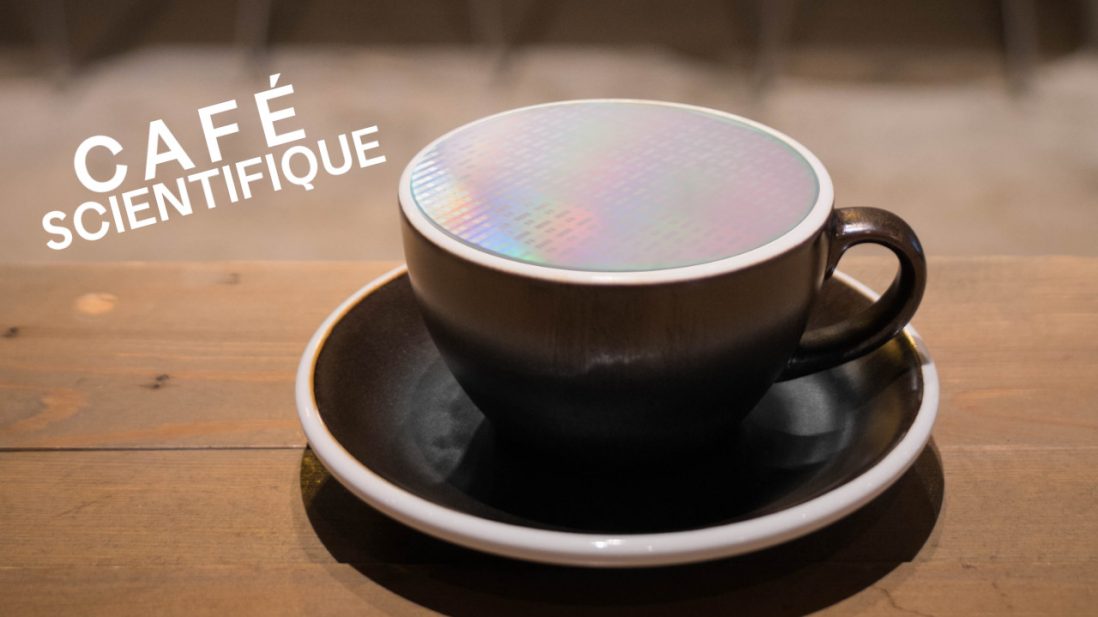Réchauffement climatique, pollution de l’air, de l’eau, des sols, contamination des aliments…
Ces sujets font aujourd’hui partie des préoccupations majeures des citoyens qui sont de plus en plus nombreux à demander à leurs dirigeants de prendre des actions correctrices. Cependant, pour pouvoir résoudre un problème, il faut d’abord le cerner, l’identifier, le quantifier. Ce qu’en science on appelle ”le mesurer”. Si les experts des plateaux télévisés et les hommes politiques sont friands des chiffres qu’ils exposent afin de soutenir leur argumentation, il est assez rare que l’on se pose la question de savoir comment ces données ont été obtenues. C’est pourquoi, nous proposons dans ce café des sciences d’aborder cette notion. Qu’est ce qu’une mesure? Celle-ci est-elle fiable? Est-elle précise? Est-elle juste ? Comment faire confiance à une mesure? Afin d’illustrer ces débats, nous utiliserons comme exemples des instruments de mesure photoniques intégrés sur des micropuces dont l’usage qui sont utilisés pour détecter et analyser des séismes, analyser des étoiles, vérifier la qualité de l’air que nous respirons ou vérifier que des éléments radioactifs ne contamine pas notre environnement.
La participation de l’auditoire est plus qu’encouragée et les intervenants adapteront leur intervention aux différentes questions posées.
Entrée libre sur inscription. (maximum 24 personnes)
L’événement sera aussi diffusé en direct sur notre page Facebook puis en replay sur notre Chaîne Youtube
Biographies
Jean-Emmanuel Broquin received an Engineering Degree in Physics of Microelectronic Devices from the Ecole Nationale Supérieure de Physique de Grenoble (France) in 1993, and a Master degree in Optics Electromagnetism and Optoelectronics from the Institut National Polytechnique de Grenoble (France) the same year. Since the completion of his PhD on Erbium-Doped Waveguide amplifiers in 1997, he has been working on both active and passive integrated optics devices (mainly realized on glass substrate). In 1999, he has been appointed Associate Professor at the Grenoble Institute of Technology (G-InP, France) and became a Full Professor in 2007. His main teaching activities are microtechnology, optoelectronics and integrated optics. After having been in charge of the Photonics group of the IMEP (Institute for Microelectronics, Electromagnetism and Photonics), and the Director of this 150 people research institute, he is now in charge of its dissemination and industrial partnerships. Jean-Emmanuel Broquin has authored or co- authored more than 100 articles and conferences in the field of integrated photonic devices. In 2020, Pr Broquin has been awarded the Distinguished Chair of the Nokia Foundation with the Institut Français de Finlande and he became an Adjunct Professor (Docent) of the University of Eastern Finland in 2021.
Dr Laeticia Petit is a Professor at Tampere University (TAU) (Finland) and also a Docent at Åbo Akademi and at TAU (Faculty of Medicine and Health Technology). She is also the Head of the International BSc program in Science and Engineering. Since her PhD in 2002, she has examined the role of structure/property relationships in a range of (passive and active) oxide and non-oxide glasses used in fiber and film, chemical sensing, molded optics, and applications utilizing photo-induced property modification. She has also extensive experience in teaching and researcher training through projects like ATLANTIS, CERAM and GLOWTRACK funded by Academy of Finland and also Glacerco-ITN or CoACH-ETN, 2 EU Marie Curie programs. She is also active internationally: she is a member of the Technical Committee 20 (TC20) in the International Commission on Glass (ICG), lifemember of the American Ceramic Society, Associate Editor for Optical Materials journal. As of today, she has mentored/supervised 5 PD, 9 PhD, 13 MScs, 14 BScs and 3 high schools students. Dr Petit has published over 158 papers in major international journals on optical glasses and her papers have attracted over 2400 citations, yielding an H-index of 27 (excluding self-citation).
Matthieu Roussey, is leading the integrated optics group (about 15 researchers) of the Institute of Photonics at UEF in Joensuu. He obtained his PhD from the FEMTO-ST institute (Besançon, France) in 2007. He was team leader in the Optics & Photonics Technology Lab at EPFL (Neuchâtel, Switzerland) from 2007 to 2011. Since 2011, he has been working as a senior researcher at UEF, from which he obtained a tenure track position in experimental photonics in October 2016. In October 2020, he obtains a position of full professor. Besides his interests on novel photonic concepts, his research is focused on the transfer of nano- and micro-structures to real devices, for applications in telecom, sensing, and photonics computing. More specifically, his focus is on silicon photonics and new materials for photonics, material sciences, and spectroscopy. He also works actively on advanced concepts to harvest surface waves from waveguides. An important field of research of the group is on the optical detection of micro and nanoplastics in water environment.
